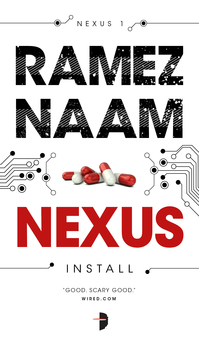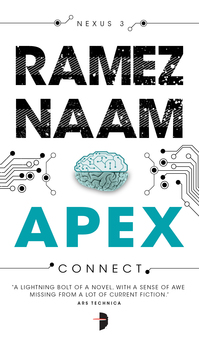(With contributors Raq, Charlie, & Malka - see below)
With Verizon's purchase of Yahoo!, young developers' thoughts turn to Flickr -- one of the long-lived and popular core acquisitions -- and we think longingly of the early days, back when photo apps were fleet and well-supported. When everyone knew the value of good code. When we felt fairly confident that our stuff would stay our stuff.
Yeah. Okay. Done laughing?
We're so resigned to not truly owning the digital property we've paid for that iTunes' arrogance deleting personal music files is barely registering, except with musicians who are losing their personal work and a number of voices crying out on Twitter, especially during updates. We're used to tech companies redesigning interfaces in the middle of the night, taking away much-loved tools, and replacing them with advertising and easier ways to share more faster. The interface is where the profit is, and who cares about the content?
Worse, when looking at the Yahoo! buyout in particular, we worry that Verizonhoo! has no clue how Flickr works, much less how to support it. We loved the tech that Ludicorp built and sold to Yahoo in the early days. But you'll remember that Yahoo!, after "losing" both original leaders -- Caterina Fake and Stuart Butterfield -- also proceeded to lose its grip on how Flickr functioned, and what client needs it served. We fear for what remains of Flickr, once again, and are busy downloading years of images before saying the word "flickr" becomes a paid premium service.
In the bigger (ahem) picture, we're rapidly approaching that point in tech where historical knowledge of base code is long gone and corporate ability to pivot based on user needs is lost due to mergers, firings, and general MBA-nization of tech innovation. Yes, that's been going on since the 1980s and earlier with IBM and friends, but nearly every tech startup founded since then to take on the big corps has either been eaten or become a big corp in its own right. Tech doesn't want to be free (with apologies to Stuart Brand). It wants to be bought out.
With more mergers inevitable as the large corporations hunger for more and more user data, we worry that any suitably evolved tech will seem more like magic to its holding company -- and that will impact not only how we use that technology going forward but also how technology continues to evolve in its use of us. Our data is already a value point, our time already part of the business plan. What's next?
Our intrepid correspondents have amused themselves by ginning up predictions* for future mergers and their outcomes. Feel free to play along / roll your own.
*no actual predictions were harmed in this game.
- Facebook/Oracle : they pretty much already owned the mySQL dbase, actually Trading as: FACILE.
- Uber/CNN : Advertised as "Uber for News" and facing questions like "how is this different than Periscope?" This merger results in bystander reporting for micropayments, the end of the traditional tv studio, and on-call hair & makeup vans. Trading as: NEWSR
- Kaspersky/Tindr : Giving up on pretending to be anything but Russian cyberwar. Trading as: N/A privately held
- Amazon/BAe Systems : Amazon needs delivery drones; BAe Systems needs someone to buy their drones. Trading as: AMZN
- Pfizer/Blue Apron : For faster distribution of agribusiness output. Trading as: PFOD
- Monsanto/Plated : Competition is healthy; you may be less so. Trading as: MOPL
- Microsoft/Reddit : Sorry but you know it's true. Trading as: MSFT
- Google/Slack : And a hundred thousand voices cried out before their data became part of the hive. Trading as: GAAK
- T-Mobile/StubHub : T-Mobile Thursdays via bot army. Trading as: TUBHUB
- AOL/4chan : Trading as: your worst nightmare
- Flickr/iTunes : Which means Verizon/iTunes...but it's OK because while you have to pay to upload, pay to create playlists, and pay to tag music, the UI is much better. Trading as: iTUNSR
- Disney/WOTC : So yes, Nyssa Revane and Chandra Nalaar are now Disney Princesses. Trading as: WSNY
- Evernote/PayPal : Because monthly subscriptions are not enough. Trading as: EVERPAL
- Google/Monsanto : Verily. Trading as: MOOGLE
- Tesla/Spotify : The next stage in the rolling computer, app launcher, and vehicle. Trading as: TSTIFY
- IBM/BuzzFeed : They just bought it to feed to Watson. Trading as: LOLWTF
- Apple/SpaceX : Having conquered the terrestrial computer market Cupertino turns its vast, cool intellect towards the Red Planet. Or maybe they just want to download their backup of Steve Jobs into Elon Musk's brain and regain some visionary leadership. Trading as: SKYNT
- 7-11/Bitcoin : How many slushies can you mine today? International calling cards and remittance terminals. Trading as: HOTDOG
- Spotify/Youtube : video killed the radio star). Trading as: YOUSPOT
- Microsoft/Alibaba : mutually assured expansion). Trading as: ALOFT
Contributor Bios:
Fran Wilde writes science fiction and fantasy and occasionally consults on tech. She used to program games, websites, and maintain youthfully naive buy-in for companies like Macromedia and Flickr before Adobe and Yahoo! ate those and many others. Her next book, Cloudbound, comes out 9/27/2016 from Tor.
Raq Winchester is a futurist and startup mentor who has been employed by one or more of the organizations mentioned in this article. She is using those experiences to fuel her first book, on being an innovator in a bureaucracy, how a government job is like a LARP, and unicorns.
Charles Stross escaped from a dot com, wrote for computer magazines for a bit, then dived full-time into writing SF novels for a living -- honest work, unlike the other aforementioned jobs. His next book, Empire Games, comes out 17/1/2017 from Tor.
Malka Older is a writer, humanitarian worker, and PhD candidate studying the sociology of disasters. Her science fiction political thriller Infomocracy is out now, and the sequel Null States will be published in 2017.





